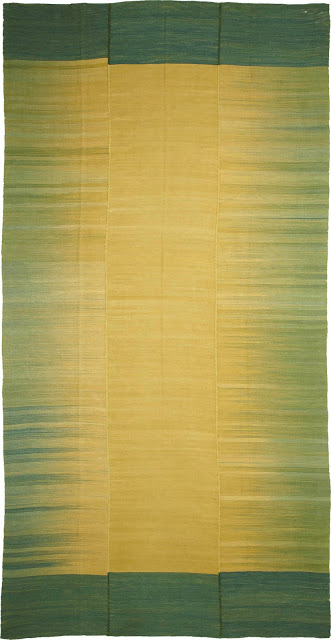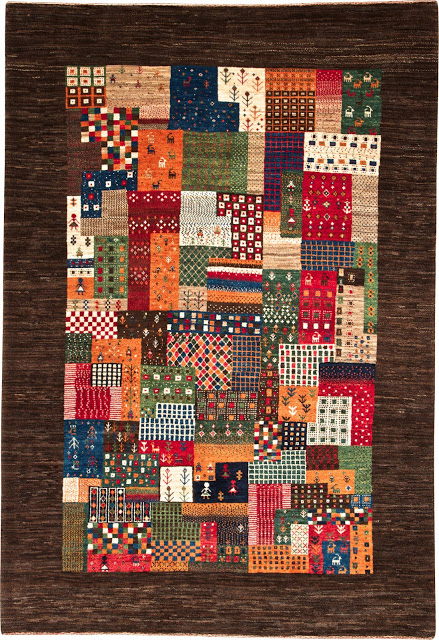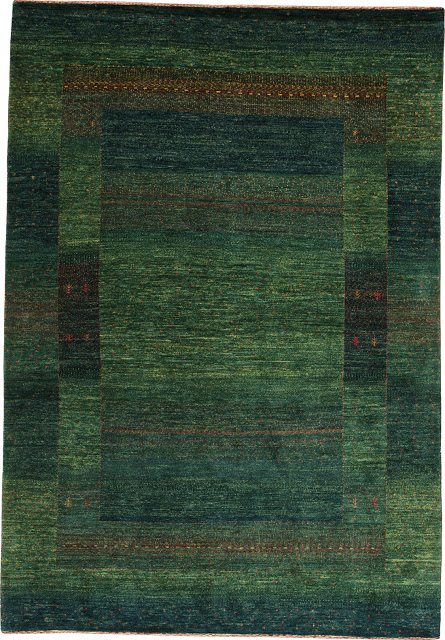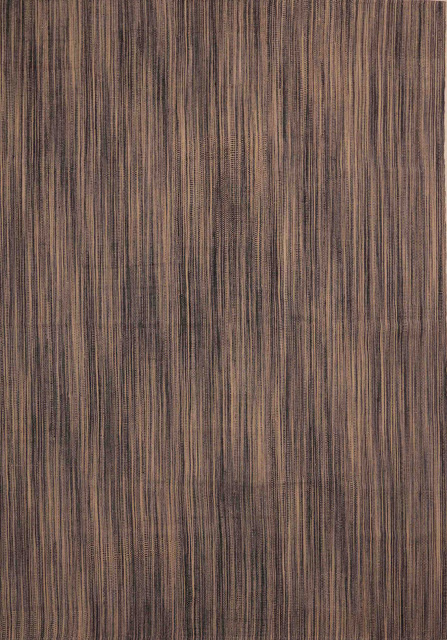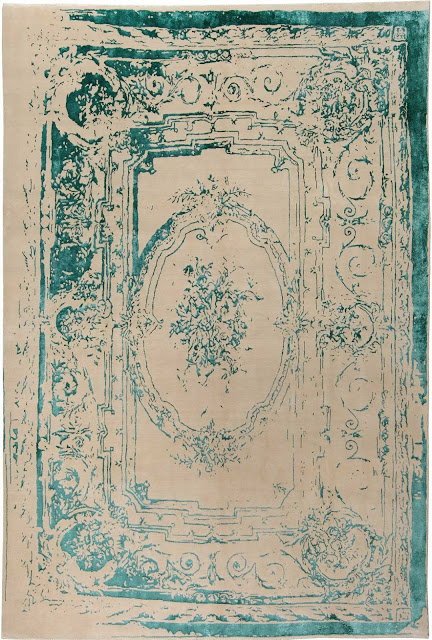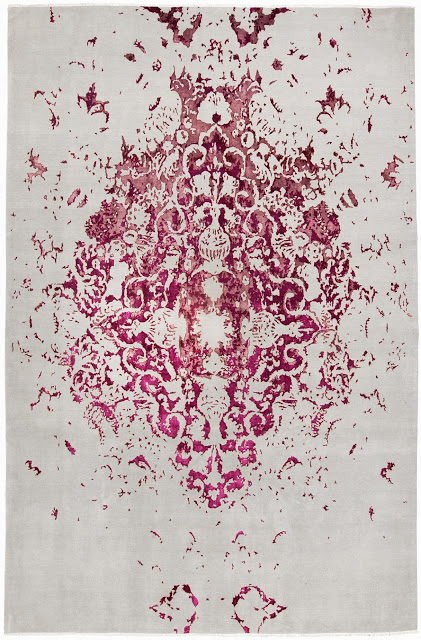It gives me great joy to announce the United States’ embargo and ban on the importation of Iranian produced rugs and carpets has been lifted. In accordance with the Joint Comprehensive Plan of Action (JCPOA) the International Atomic Energy Agency (IAEA) on 16 January 2016 certified Iran had fulfilled its initial obligations under the JCPOA and thus ‘Implementation Day’ came to pass and with it the end of the embargo. Throughout my lifetime the embargo has been enacted and rescinded on numerous occasions in various efforts to force The Islamic Republic of Iran into compliance with geopolitical ideologies we shall not again discuss; politics, religion, and all that. (These were previously discussed in: ‘Lift Embargo: Iranian Rug Trade to Resume‘) Each attempt has to my understanding seemed only to moderately punish the people of Iran – the very people who make the lovely rugs and carpets so often revered, while fully punishing United States’ consumers (How dare they, the customer is never wrong!) Let us hope this instance may be far more enduring than in the past.
As Iranian made rugs and carpets may once again be legally imported into the United States and as Implementation Day fortuitously coincided with DOMOTEX what better way to celebrate such occasion than a summary overview of some of the stunning carpets being made in Iran.
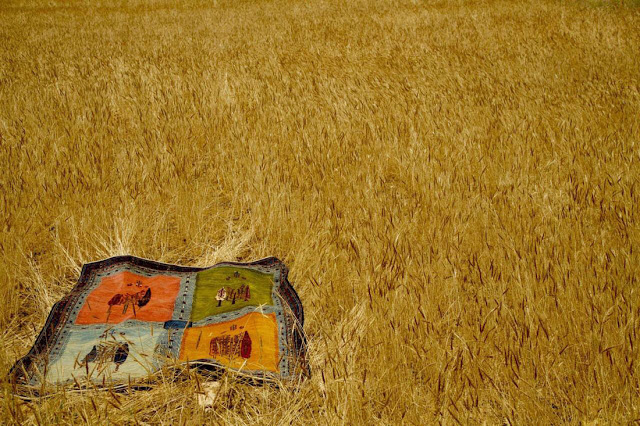
Where else could one possibly start but with none other than venerable Iranian carpet house Zollanvari. As the company that all but introduced quality Gabbeh carpets to the west en masse and had sizeable presence and business importing said carpets into the United States prior to the embargo, it would seem no-one would be more qualified to speak on the subject. ‘The lifting of the embargo is a real relief and I’m very happy that finally once again the people of the United States can enjoy the handicraft of the nomadic tribes of Iran…’ says Reza Zollanvari when asked about the end.
Positivity aside there was a small degree of confusion during DOMOTEX and upon hearing news of Implementation Day. ‘When would carpets be allowed to enter the United States?’ was the overriding theme as buyers eager to hedge a competitive advantage over those not at the premier global rug and carpet forum, sought to buy immediately. During dinner the night of Implementation Day anecdotal advice from David Young of COVER and myself tended toward: ‘Buy now sort the details later as it won’t be long.’ Whereas with the release of further documentation from both the Untied States’ Department of State and the Department of the Treasury the following day, ‘those who are educated and literate’ – to anonymously paraphrase an astute colleague – knew they could indeed immediately buy, buy, buy, (and import)!
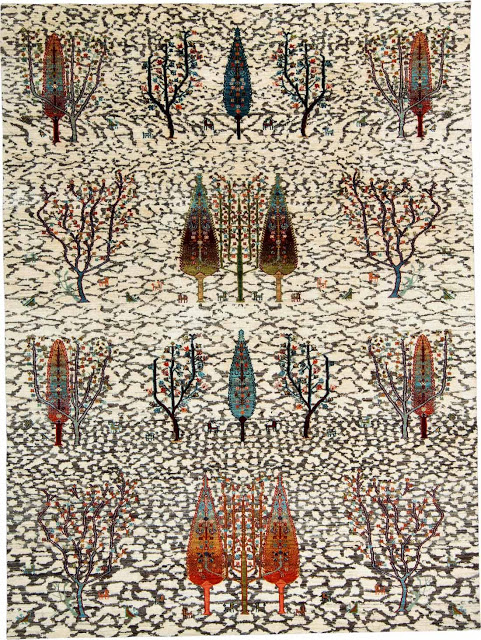
To the Trade: Handmade rugs and carpets are made in a variety of countries spanning the globe including but certainly not limited to Iran. While you are likely familiar with carpets made in India, Pakistan, Turkey, and Nepal those from Iran may be new to you due to the United States’ former embargo, though this did not preclude trade in Iranian carpets already in the United States. As such older Iranian made carpets have been widely available and like anything decorative may or may not be desirable. New Iranian carpets will begin to be seen in rug and carpet showrooms throughout the United States in 2016 and either can provide a fresh and often individualized one-of-a-kind aesthetic well suited to contemporary interior design.
As we can once again ‘enjoy the handicraft of the nomadic tribes of Iran…’ as well as any carpets produced in a manufactory, we must also examine what it means to United States’ rug dealers and to the design trade. ‘To the Trade’ is a new prototype feature here on The Ruggist that will provide annotations explaining the world of rugs to consumers and designers alike. In addition, The Ruggist will also begin featuring ‘To the Trade Only’ articles written specifically for designers in order to foster broader understanding of what we consider the ‘proper’ use of handmade carpets.
Werner Weber is a renowned rug dealer now in his sixth (6) decade of trading rugs and carpets. Long an aficionado of fine quality carpets (both aesthetically and technically) he is optimistically looking at the United States this autumn and ‘will exhibit during the fall in New York when the two (2) exhibitions are held at the same time. [The Shows being at the same time and] separated by only a few blocks makes it really attractive.’ he said when asked about his future plans for the United States.
Faradj & Homayoun Farhadian has a very strong presence and does well in the European market, this according Homayoun Farhadian, Partner at the firm. They also do appreciable business in Japan – a market known for its extreme affinity toward quality – operating two (2) showrooms, one in Tokyo and the other in Kobe (near Osaka) in cooperation with ‘Meiwa’.
To the Trade: There is a widely held misconception that all Iranian made carpets are the best quality in the world; this is simply not the case. Each country produces a variety of qualities of carpets ranging from one (1) to ten (10) on an arbitrary scale. While it is very easy to compare qualities within a single construction type or country of origin, drawing carte blanche comparisons between countries is simply not possible. Be wary of ANY rug dealer who would attempt to sell you a carpet espousing its superior quality solely because of its geographic origin.
Homayoun speaks a bit philosophically about the importance of nomadic and tribal rugs in the contemporary marketplace: ‘I believe that the United States’ market needs Persian rugs. There are many copies from Pakistan and India but those are really like copies! You can order 1,000 pieces and 1,000 pieces look the same!! Our rugs are one-of-a-kind which makes it more interesting…’
To the Trade: Persian vs. Iranian. Oy! The modern day country of Iran occupies the same area that was one the Persian Empire. There is an ethno-linguistic group by the same name that comprises approximately sixty percent (60%) of the population of Iran, and as such the term Iranian and Persian are often used synonymously. The colloquial use of term ‘Persian Carpet’ or ‘Persian Style Carpet’ in the west typically denotes any carpet made in the style – that is to say using traditional designs originating from the region – of the former Persian Empire, regardless of where it is actually made. Is this correct? No, but it is how our language has evolved. As such I prefer addressing the origin of a carpet by its proper modern adjective, in this case: Iranian, though you will encounter both. If in doubt, ask to verify.
As a treasured characteristic, individuality defines much of Iranian carpet production and, like those carpets presented thus far, is embodied in those from Edelgrund. From their own marketing materials: ‘As a German-Persian brand, our company’s goal is more than just connecting two continents, but also various influences and cultures. Edelgrund unifies German reliability with creative Persian craftsmanship inspired by a new generation with fresh ideas and modern design.’
The deft understanding of old weaving techniques lead Edelgrund to developed the ‘Massal’ Collection of special flatweave, which in addition to combining different weaving techniques utilizes different colour yarns in the warp and weft yielding subtle colour effects best experienced from a variety of angles. As a consequence the specialness of the carpet is not derived from a bold design or pattern but rather from a sophisticated understanding of colour, presence, and the ability of a carpet to age well and develop a stunning ever evolving patina. Edelgrund, clearly eager to be in the United States’ market, will be exhibiting at Highpoint Market 16-20 April 2016.
So much of Iranian carpet production focuses on the storied history of the region and its place of honour as both the arguable progenitor of carpet weaving and as the namesake region of the now colloquial ‘Persian’ carpet. But what about the future? For that The Ruggist would have formerly gladly referred you to the carpets of Sahar which up until the onset of this last embargo were woven in Iran and were a true feat of programmed rug production. Perhaps Sahar still best embodies what the future of rugs and carpets may be like; globally sourcing the best materials (including Iranian wool) and labour without regard to strict geographic distinctions, but that is not a discussion for today. What is however is the future of Iranian rug production.
To the Trade: Programmed rug production is a term referring to carpets that can be ordered repeatedly in a variety of standard sizes and is the precursor of Made-to-Order, Custom, or Bespoke carpet production all of which allow for a high degree of personalization including size, colour, and design. One-of-a-Kind carpets are precisely as the name implies and in general cannot be ordered again. Whether you prefer one over the other is a question of your own style and design methodology, not a question of quality.
Just as western rug designers have been inspired by countless disparate ethnographic textiles in their creation of modern masterpieces, so too can those very cultures be inspired by the west in their creation of what Hossein Rezvani calls ’21st Century Persian Carpets.’ Take for example the above pictured ‘Frenchie Turquoise’ from Mr. Rezvani. This carpet exemplifies modern carpet design and production (including custom) and embodies the cyclical (not cynical!) and inspirational nature of design. ‘Frenchie’ utilizes a typical French origin Aubusson design – early versions of which were inspired by Turkish Oushaks, and gives it a bold two (2) colour graphic treatment utilizing the faux faded, looks like a bad photocopy from an ancient encyclopedia aesthetic that is exceptionally hot in carpets at the moment. From Turkey to France to Iran and now to consumers in the United States. ‘I get a lot of inquiries from Interior Designers in New York and Los Angeles more or less weekly, so I’m very happy that the embargo has been lifted. The United States is a major market for persian carpets and now being able to bring in my contemporary persian carpets, I think is a win/win situation.’ says Hossein Rezvani when asked about the embargo who then continued: ‘The feedback that I get from United States retailers so far is that they where waiting for high quality contemporary carpets, as they see it’s not only the design anymore, [but] also the quality as a major key to sales. It is the combination of modern design with highest quality which will succeed longterm.’
The rorschachian treatment of a traditional Persian Tabriz design is wonderfully abstract all but begging the viewer to answer the question: ‘What do you see?’ Made using the best materials (Kork Wool) knotted at an unnecessarily fine quality of 1,000,000 knots per square meter (approximately 640 per square inch) everything about this carpet conveys luxury and decadence.
To the Trade: Knot count, along with quality of wool, are just two (2) of the many factors that contribute to the overall quality of a rug or carpet, though for many knot count reigns supreme. A finer carpet, that is to say one with a higher knot count, can express more detail in a design, whereas a courser carpet – one with a lower knot count, generally has simpler, less detailed design elements. One is not necessarily better than the other. ‘Tabriz Lilac’ while detailed, also has a large expanse of solid colour, which from a technical standpoint does not require a fine knot. Choosing to use one as Hossein Rezvani has done adds a degree of character beyond necessary, leaning toward luxury.
The ability of United States’ rug and carpet dealers, wholesalers, consumers, and the like to once again import carpets from Iran is a great relief not only to those who produce them, but to those who would see handwork continue well into the future. As a developed nation Iran is at an advantage in some ways over that of other rug producing countries. The Government of Iran has a program allowing for what amounts to an ‘old age pension’ or ‘social security’ for weavers, an environmental protection scheme that sees waste water from dye facilities treated, and while no system is perfect, it is reasonably safe to assume that an Iranian made carpet – though perhaps pricier – is made under fair and equitable conditions. ‘Our main activity in Iran is more often one of confirming and verifying compliance [to the Label STEP standard] within the supply chain, as opposed to finding non-compliance’ according to Reto Aschwanden of Label STEP, a non-profit working to bring fair trade principals to the handmade carpet industry and which has been working in Iran for at least the last ten (10) years. He continues, ‘Of course I am specifically talking about those producers who are members of Label STEP, but overall working conditions are good and wages are very high. It [Iran] is a developed country and so our focus is a little different than in other countries. [In addition to compliance monitoring,] we assist weavers in enrolling in the Government pension scheme, providing forms and spreading word of the benefits.’
The end of the Iranian carpet embargo is good not only for Iran and the people thereof, but also for American consumers of quality carpets and design, and to be frank, for longer term political stability. As it is beyond the ability and scope of any one article to feature every Iranian producer of carpets go forth with this advice from the close of my last article on Iran: ‘As the embargo has ended we should remain cognizant of the individual value of Iranian made carpets, but weary of their potentially overstated collective quality,’ as it true of any country or region.
[Edit – 18 February 2016: Ten years out of the United States and I still think much the same on occasion. With apologies to my Canadian and international readers whom I neglected in this article, I’ll would like to offer you a little information as well. The Canadian Embargo formally ended on 5 February 2016 and as such carpets can once again be imported into Canada. This brings Canada into alignment with other member states in implementing ‘changes to the United Nations sanctions against Iran as decided by the Security Council of the United Nations in Security Council Resolution 2231 (2015).’ this per Global Affairs Canada. This implementation will now see trade of new and extant Iranian carpets in all major international carpet markets.]


